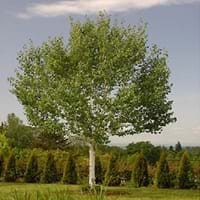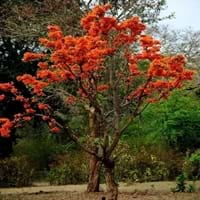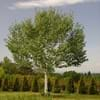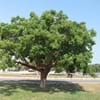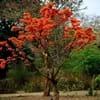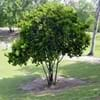Life Span
Perennial
Perennial
Origin
India, Nepal, China
Southern Asia, India
Types
Not Available
Not Available
Habitat
Mountains
Subtropical climates, Tropical Climate
USDA Hardiness Zone
5-7
10-13
Sunset Zone
3a, 3b, 4, 5, 6, 7, 8, 9, 10, 11, 14, 15, 16, 17
H1, H2, 23, 24
Habit
Pyramidal
Upright/Erect
Flower Color
Tan, Brown
Orange, Black
Flower Color Modifier
Bicolor
Bicolor
Fruit Color
Not Available
Bronze, Sandy Brown
Leaf Color in Spring
Yellow green
Green
Leaf Color in Summer
Dark Green
Dark Green
Leaf Color in Fall
Yellow
Dark Green
Leaf Color in Winter
Not Available
Not Available
Leaf Shape
Cordiform
Pinnate
Plant Season
Spring, Summer, Fall, Winter
Spring, Winter
Sunlight
Full Sun, Partial Sun
Full Sun, Partial Sun
Growth Rate
Medium
Medium
Type of Soil
Loam, Sand
Loam, Sand
The pH of Soil
Acidic, Neutral
Acidic, Neutral
Soil Drainage
Average
Well drained
Bloom Time
Early Spring
Early Spring, Late Winter
Tolerances
Not Available
Drought
Where to Plant?
Ground
Ground
How to Plant?
Grafting, Stem Cutting
Seedlings
Plant Maintenance
Medium
Medium
Watering Requirements
Requires watering in the growing season
Average Water Needs
In Summer
Average Water
Lots of watering
In Spring
Moderate
Moderate
In Winter
Average Water
Average Water
Soil pH
Acidic, Neutral
Acidic, Neutral
Soil Type
Loam, Sand
Loam, Sand
Soil Drainage Capacity
Average
Well drained
Sun Exposure
Full Sun, Partial Sun
Full Sun, Partial Sun
Pruning
Remove damaged leaves, Remove dead branches, Remove dead leaves
Remove damaged leaves, Remove dead branches, Remove dead leaves
Fertilizers
Fertilize in early spring, Fertilize in late fall, slow-release fertilizers
All-Purpose Liquid Fertilizer
Pests and Diseases
Honey fungus, Leaves with brown tip, Phytophthora Root Rot, Powdery mildew, Verticillium Wilt
Rats
Plant Tolerance
Dry Conditions, waterlogging, Wet Site
Drought
Flowers
Insignificant
Showy
Flower Petal Number
Not Available
Single
Foliage Texture
Medium
Medium
Foliage Sheen
Matte
Matte
Attracts
Not Available
Birds, Hummingbirds
Allergy
Not Available
Anaemia, Kidney Disease
Aesthetic Uses
Not Used For Aesthetic Purpose
Not Used For Aesthetic Purpose
Beauty Benefits
Weightloss
Not Available
Environmental Uses
Air purification
Air purification
Medicinal Uses
anti-cancer, anti-inflammatory, antimicrobial, Antioxidants, Antiseptic, Carminative
Analgesic, anti-inflammatory, antimicrobial, Astringent, Diuretic
Part of Plant Used
Bark, Leaves
Flowers, Gum, Leaves
Other Uses
Used in construction, Wood is used in construction
Used as a dyeing color for fabric, used for making charcoal, Used to make leather, Used to prepare a traditional Holi colour
Used As Indoor Plant
No
No
Used As Outdoor Plant
Yes
Yes
Garden Design
Feature Plant, Shade Trees
Feature Plant, Shade Trees, Tropical
Botanical Name
BETULA utilis
BUTEA monosperma
Common Name
Himalayan Birch
Flame-of-the-forest, Parrot Tree
In Hindi
हिमालय सन्टी
पलाश
In German
Himalaya-Birke
Flamme -of -the- Wald
In French
bouleau de l'Himalaya
Flame -of-the -forest
In Spanish
abedul del Himalaya
Llama - de - la - bosque
In Greek
Himalayan σημύδας
Φλόγα - of-the - δάσος
In Portuguese
bétula Himalaia
Chama -of-the -forest
In Polish
Himalayan brzoza
Płomień -of -the- las
In Latin
Birch Himalayan
Flamma -of - Silva
Phylum
Tracheophyta
Magnoliophyta
Class
Magnoliopsida
Magnoliopsida
Family
Betulaceae
Fabaceae
Clade
Angiosperms, Eudicots, Rosids
Angiosperms, Eudicots, Rosids
Tribe
Not Available
Phaseoleae
Subfamily
Not Available
Faboideae
Number of Species
Not Available
Not Available
Properties of Himalayan Birch and Flame-of-the-forest
Wondering what are the properties of Himalayan Birch and Flame-of-the-forest? We provide you with everything About Himalayan Birch and Flame-of-the-forest. Himalayan Birch doesn't have thorns and Flame-of-the-forest doesn't have thorns. Also Himalayan Birch does not have fragrant flowers. Himalayan Birch has allergic reactions like Not Available and Flame-of-the-forest has allergic reactions like Not Available. Compare all the properties and characteristics of these two plants. Find out which of these plant can be used as indoor plant. If you are interested to decorate your house and garden, find out aesthetic uses, compare them and select the plant which will beautify your surrounding. Along with beautification, try comparing medicinal and edible uses of Himalayan Birch and Flame-of-the-forest and you can choose the plant having best and most benefits.
Season and Care of Himalayan Birch and Flame-of-the-forest
Season and care of Himalayan Birch and Flame-of-the-forest is important to know. While considering everything about Himalayan Birch and Flame-of-the-forest Care, growing season is an essential factor. Himalayan Birch season is Spring, Summer, Fall and Winter and Flame-of-the-forest season is Spring, Summer, Fall and Winter. The type of soil for Himalayan Birch is Loam, Sand and for Flame-of-the-forest is Loam, Sand while the PH of soil for Himalayan Birch is Acidic, Neutral and for Flame-of-the-forest is Acidic, Neutral.
Himalayan Birch and Flame-of-the-forest Physical Information
Himalayan Birch and Flame-of-the-forest physical information is very important for comparison. Himalayan Birch height is 1,220.00 cm and width 760.00 cm whereas Flame-of-the-forest height is 910.00 cm and width 1,070.00 cm. The color specification of Himalayan Birch and Flame-of-the-forest are as follows:
Himalayan Birch flower color: Tan and Brown
Himalayan Birch leaf color: Yellow green
Flame-of-the-forest flower color: Orange and Black
- Flame-of-the-forest leaf color: Green
Care of Himalayan Birch and Flame-of-the-forest
Care of Himalayan Birch and Flame-of-the-forest include pruning, fertilizers, watering etc. Himalayan Birch pruning is done Remove damaged leaves, Remove dead branches and Remove dead leaves and Flame-of-the-forest pruning is done Remove damaged leaves, Remove dead branches and Remove dead leaves. In summer Himalayan Birch needs Average Water and in winter, it needs Average Water. Whereas, in summer Flame-of-the-forest needs Lots of watering and in winter, it needs Average Water.
